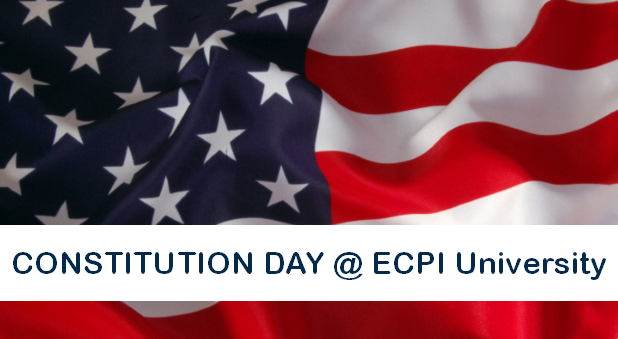Constitution Day marks the historic moment when thirty-nine courageous individuals came together on September 17, 1787, to sign the U.S. Constitution, laying the foundation for our nation. This day honors everyone born in the United States or who has gained citizenship through naturalization.

Visit the Constitution Day LibGuide for information & resources related to the United States Constitution!
On this significant date, the delegates of the Constitutional Convention gathered one final time to sign the document that would shape our country’s future. We invite all Americans to celebrate Constitution Day by participating in local events, engaging in educational activities, and taking part in parades and demonstrations that honor the United States and the precious freedoms secured by our Founding Fathers.
Web Links:
- Bill of Rights Institute – The goal of the Bill of Rights Institute is to help the next generation understand the freedom and opportunity the Constitution offers.
- CATO Institute – Constitution Day Symposium – The CATO Institute celebrates Constitution Day each year with the release of the new issue of the Cato Supreme Court Review, and with a day‐long symposium featuring noted scholars discussing the recently concluded Supreme Court term and the important cases coming up.
- Constitution of the United States – Drafted in secret by delegates to the Constitutional Convention during the summer of 1787, this four-page document, signed on September 17, 1787, established the government of the United States.
- Constitution Q&A – Questions & Answers Pertaining to the Constitution, excerpted from The Story of the Constitution, by Sol Bloom
- Constitution of the United States: A History – Based on the Introduction to A More Perfect Union: The Creation of the U.S. Constitution.
- Signer’s Hall – Visit the National Constitution Center from anywhere with this virtual tour of their iconic Signer’s Hall exhibit.
Videos:
